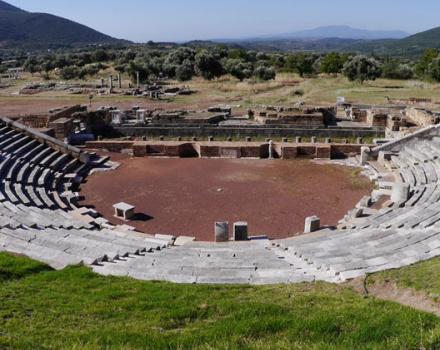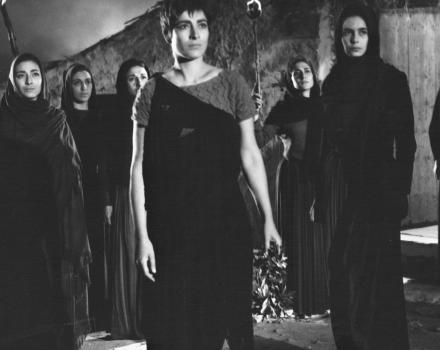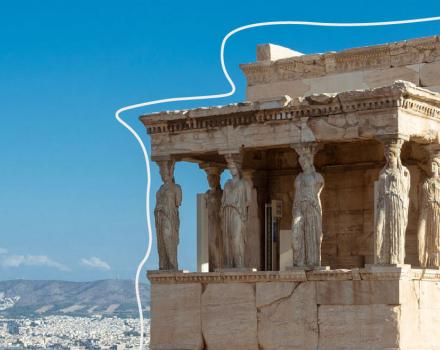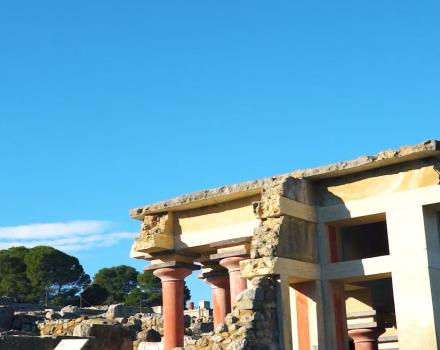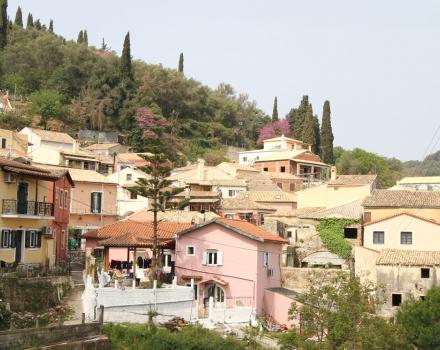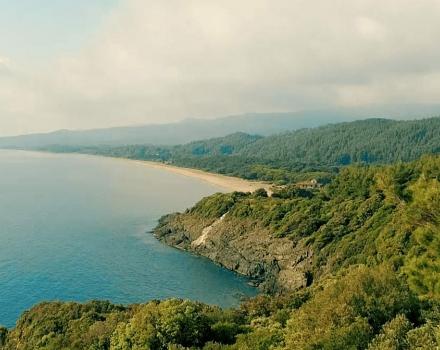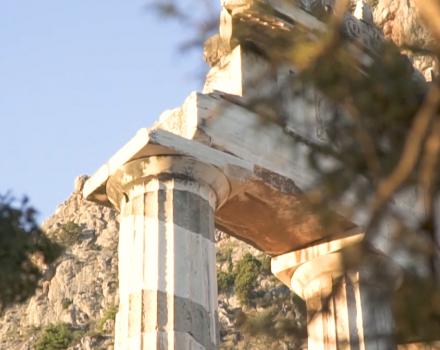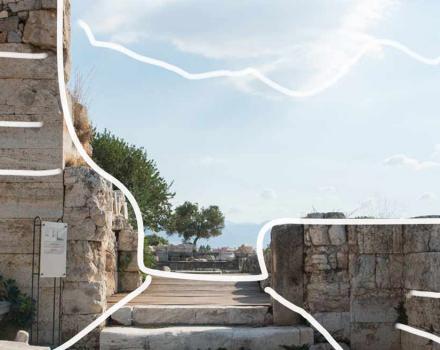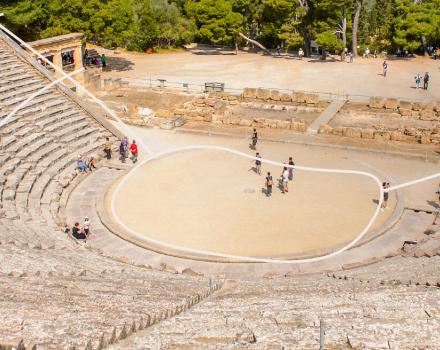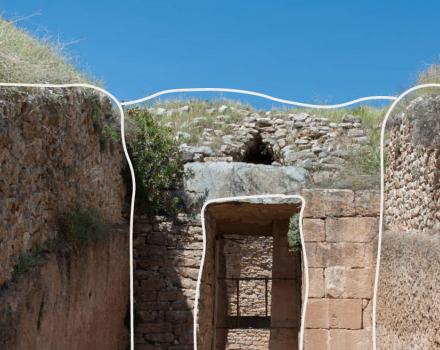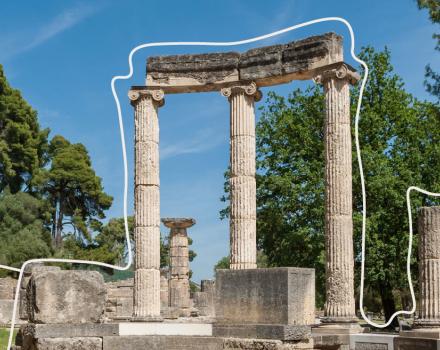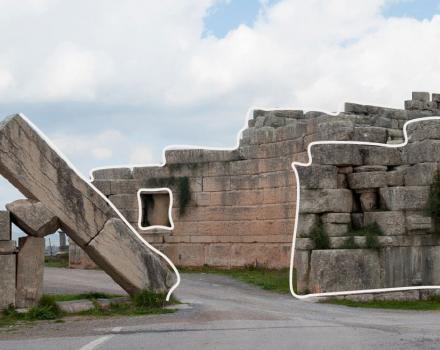Do you remember the first beauty competition of the gods in antiquity? According to the myth, the story begins with the reception organized by Zeus at Mount Olympus to honor Thetis' wedding with the mortal Peleus. However, Zeus refused to invite goddess Eris and when she took revenge, throwing an apple that wrote "for the most beautiful," Zeus did something sneaky, avoiding the difficult position to choose between Hera, Athena and Aphrodite. He chose the mortal Paris as the judge. Athena offered him wisdom and the ability to be a good warrior, Hera would provide him political power and riches and Aphrodite the beauty and love, that is, the “Helen of Troy”, the most beautiful woman in the world..Paris gave the "Apple of Discord"(the golden apple of Eris) to Aphrodite, resulting the 10-year Trojan War.
"The full – figured women of Neolithic Era have big curves, characteristic refering to fertility while the strong women of the glorious Mycenean civilization depicting frosted with beautiful clothes and jewelries.

The "worship of Beauty" is well - known to the ancient Greeks, who personified it in the goddess Aphrodite. While the worship of Beauty, related to "Paris’ judgment” had devastating consequences, according to the predominant ancient Greek notion the Beauty had simultaneously the meaning of virtuous. Indicative is the idiomatic phrase of "kaloskagathos"- “good and decent”, which related to someone combines the external and the moral beauty. How, however, does the depiction of the human form evolve through the time passes and what are the different aspects of aesthetics in heterogeneous social and cultural environments? These are, among other things, the questions posed by the periodic exhibition "The countless aspects of Beauty", which will be inaugurated in May at the National Archaeological Museum. Aspects of this great cultural event will be seen in three small exhibitions that will function as "satellites" of the (NAM) exhibition, with the same title, in an equal number of museums in the region.
"The exhibitions of the National Archaeological Museum of Athens regarding the Beauty in the ancient Greek world are four; the main exhibition hosted at its building and three more in Sparta, Ioannina and Tinos, alongside the cooperation of the Piraeus Bank Group Cultural Foundation.
Three Museums of Piraeus Bank Group Cultural FoundationAs a result of the collaboration between the National Archaeological Museum and the Piraeus Bank Group Cultural Foundation, the "satellite" exhibitions will be hosted in three museums of the Foundation. The first exhibition will open its doors at the Museum of Olive Oil and Greek Olive Oil, in Sparta, which will be inaugurated on Saturday February 19th until April 15th. Afterwards, the exhibition will be transferred to other two PIOP’s museums: the Silversmithing (Ioannina) and the Museum of Marble Crafts (Tinos).

Forty ancient artefacts were selected from among NAM’s Collections dating from prehistoric through to Roman times, for the three satellite exhibitions. Several exhibits are presented for the first time to the public, serving the EAM-PIOP collaboration project’s desideratum, which is to give the local communities the opportunity to get familiar with the artworks of the ancient Greek culture from the collections of the country's first museum. The three exhibitions follow the rationale of the central exhibition prepared by the National Archaeological Museum, aiming to show “The condensation of Beauty in antiquity’, the high aesthetics as a demand and a goal of every human society, but also as a driving force in the production and promotion of Art ".

Four exhibits will be hosted in each of the three exhibitions. The rest of the ancient artefacts were selected on the criterion of the section’s composition that is in a conceptional sense with the themes of the three museums. Thus, “in Sparta, the body’s beautification with oils and perfumes will be projected; elaborate jewelries will be starring in Ioannina, while marble artworks of Cycladic civilization will be featured in Tinos’ museum”.

Concerning the first exhibition in Sparta, amongs the valuable exhibits, the following stand out: the Linear B writing leaf- shaped plate from Pylos dated back in 1200 BC included the ideogram of olive oil, Mycenaean false-necked amphorae, as well as vases depicting the beauty of gods and mortals and destined for the storage of aromatic substances and oils. A statuette of the goddess Aphrodite framed by winged Eroses welcomes visitors to the exhibition. The units of the Cycladic figurines, the pieces of jewellery made of gold and the ceramic artefacts follow, while the visitor have the opportunity to discover recipes of the perfume-sellers of Antiquity.

Info: The exhibition ‘The countless aspects of Beauty’, Museum of the Olive and Greek Olive Oil, Othonos & Amalias 129 - Sparta, 10:00 – 18:00, The exhibition runs untill 15 April 2018

What was beautiful?The itinerant exhibition “The countless aspects of Beauty” is part of the European Year of Cultural Heritage 2018 program. Its’ exhibits will guide the visitors from the Neolithic Era until Late antiquity, unrevealing what thought to be beautiful by the ancient Greek civilization throughout its evolutionary course. Outstanding examples are the “full- figured” women of the Neolithic period, which symbolize prosperity at times when providing food was a priority. The female form on Cycladic statuettes is depicted naked, with hands folded below the breasts, the head slightly tilted back with pubic triangle engraved, while strong women decorated with beautiful clothes and frosted with jewelries in Mycenaean art. Women are presented differently when the study of the human figure reaches its climax during Classic (5th and 4th century BC) and Hellenistic period (3rd- 1st century BC), creating artifacts of unparalleled beauty.
